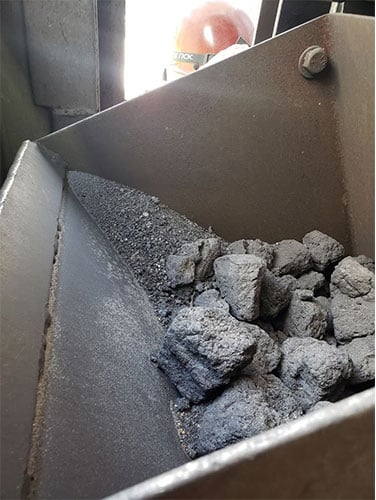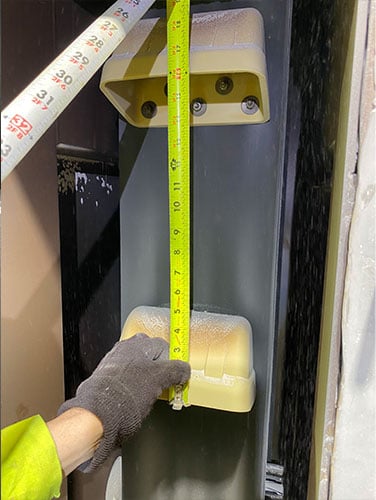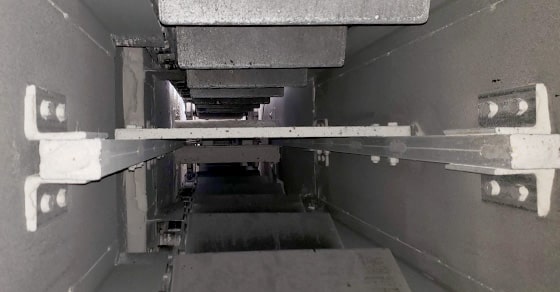One of the most common issues plant managers run into with their bucket elevators is the need to increase capacity. Plants built decades ago are facing throughput limitations associated with designs they’ve outgrown, leading many plant managers wondering how they can squeeze a little more capacity out of their existing unit(s).
Several potential avenues exist for achieving slight increases in bucket elevator capacity. In other cases, however, replacement may be the only option, requiring careful consideration of the material and surrounding infrastructure.
The following covers five ways to increase bucket elevator capacity in an existing plant.
Increase Belt/Chain Speed
When the desired capacity increase is relatively minor, it may be possible to increase the belt or chain speed to achieve additional throughput. In doing so, plant managers can typically gain anywhere from 10 TPH to 75 TPH, though this depends on several factors.
An increase in belt or chain speed must be expertly balanced with feed rate to avoid problems with feeding and/or discharge, particularly with centrifugal-style elevators already operating at high speeds.
Increasing the speed of a chain elevator can also make unit operation louder, as well as increase wear on various components, due to the greater number of cycles per minute the elevator undergoes.
When increasing unit speed, it may also be necessary to change out the drive (motor and reducer).
Optimize Bucket Fill
Bucket fill is an important contributor to the elevator sizing process. Depending on the material being handled and the current operating conditions, it may be possible to increase bucket fill to gain additional capacity, particularly if the buckets are not currently filled to their max capacity.

If bucket capacity is not fully utilized, as shown here, fill can be increased to increase capacity.
The capacity of a given bucket style is calculated based on a liquid, or rather, the bucket’s water-holding capacity. Since solids can be heaped, however, it may be possible to fill the buckets beyond their designed capacity. This should be done with caution, however, as overfilling often leads to material spillage.
The ability to increase bucket fill depends on several factors, including:
- Current fill percentage
- Material angle of repose
- Material bulk density
- Elevator speed
Reduce Bucket Spacing
In some cases, bucket spacing can be reduced to incorporate additional buckets, though this is only an option with centrifugal elevators; because continuous elevators utilize the back side of the preceding bucket to guide material into the discharge chute, bucket spacing is already designed for optimal discharge. Any change in spacing would inevitably cause issues.
With a centrifugal elevator, reducing bucket spacing must be carried out with various considerations in mind, including bucket type and existing spacing; buckets stacked too closely will interfere with proper feeding and discharge.

A FEECO Customer Service Engineer measures bucket spacing on this belt elevator.
Evaluate Bucket Style
When the above options are not possible or cannot meet the desired increase in capacity, the next option to consider is utilizing a different bucket design.
Buckets come in an array of shapes and sizes, with options varying depending on whether the elevator is centrifugal or continuous. Custom elevator bucket designs are also available.
An alternative bucket design can sometimes increase bucket projection and volume to reach desired capacity, particularly if the original bucket style chosen was insufficient for the application.
When utilizing super-capacity fabricated steel buckets, for example, some capacity can be gained by changing the geometry of the bucket, adjusting the angle of the bucket front and increasing the height of the front lip. Bucket width can also be increased, elevator dimensions permitting.
Likewise, a centrifugal AA bucket can be changed to a Jumbo CCS bucket, an alternative that not only offers slightly greater capacity, but can also be spaced more closely together to achieve additional throughput. Or similarly, a continuous high-front (HF) bucket can be used in place of the more commonly chosen medium front (MF) to achieve additional gains.
Replace Your Bucket Elevator
While the above techniques can allow for marginal capacity increases, if a significant increase is required, replacement often becomes the only option; there are only so many things that can be done before the elevator casing size must also be increased, requiring full replacement. When replacement is the way forward, it opens the door to additional design changes that can increase capacity:
Convert from Single to Double Chain
In cases where the capacity will be substantial, or when the future may hold further increases in capacity, it may be appropriate to opt for a double chain elevator over a single chain. A double chain significantly increases the potential capacity, with super-capacity elevators capable of handling anywhere from 100 to 800 TPH.
Installation Considerations
When installation is a concern due to spatial restrictions, replacement of an existing elevator requires careful planning, and in some cases, modifications to the design; in especially challenging settings, elevator casing walls can be “panelized” so they can be dropped into place individually and then bolted together. This eases installation by minimizing the space required, because the entire casing does not need to be dropped into place as a complete unit.
Elevator Footprint
Spatial restrictions can also be a challenge when it comes to the elevator’s footprint. Because the elevator and other plant equipment were designed around an intended capacity, incorporating a larger piece of equipment can require a little more ingenuity.
As such, replacement requires a detailed study of clearances around the elevator, which could limit elevator size. When the allotted clearances are not enough, plant managers must get creative, modifying or relocating surrounding infrastructure.
Modifications to the elevator design can also be employed to minimize the equipment’s footprint and fit into a given space. By inverting the vertical angles of the elevator, for example, manufacturers can save a few additional inches.
Beyond these considerations, there are a number of additional factors plant managers must consider in replacing their elevator, such as evaluating the capital costs and installation/modification costs with the payback time frame of the additional material processed.
Conclusion
When plant managers are facing capacity limitations, the nuances associated with increasing elevator capacity require a reputable bucket elevator manufacturer that can work with the material and facility requirements to achieve the best solution, be it design modifications or a total replacement.
FEECO has been manufacturing custom bucket elevators since 1951. In addition to new elevators, our Customer Service Team can evaluate your existing elevator and recommend modifications to achieve your production goals. For more information, contact us today!



